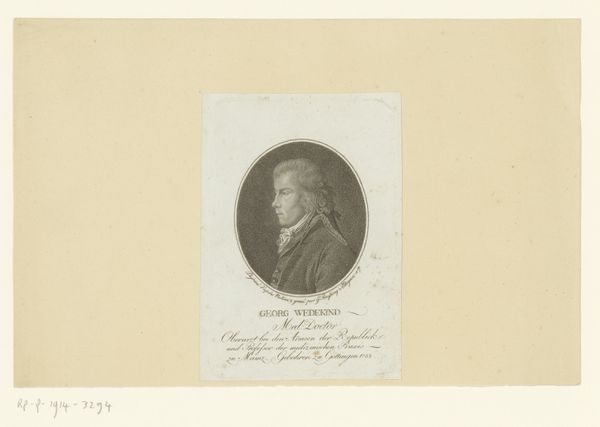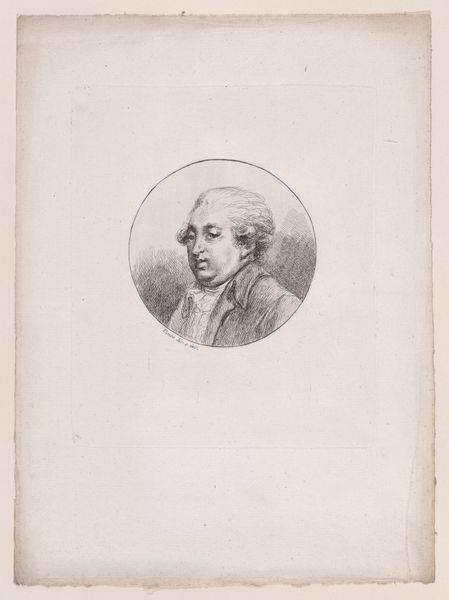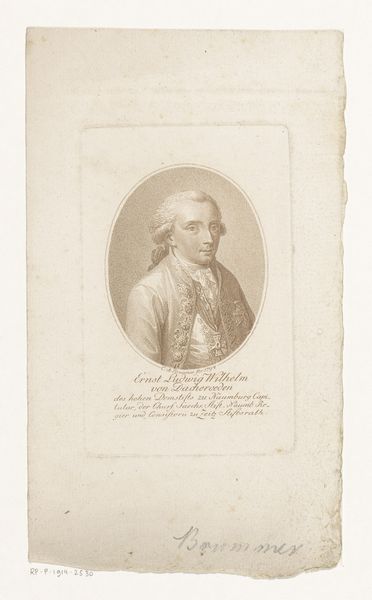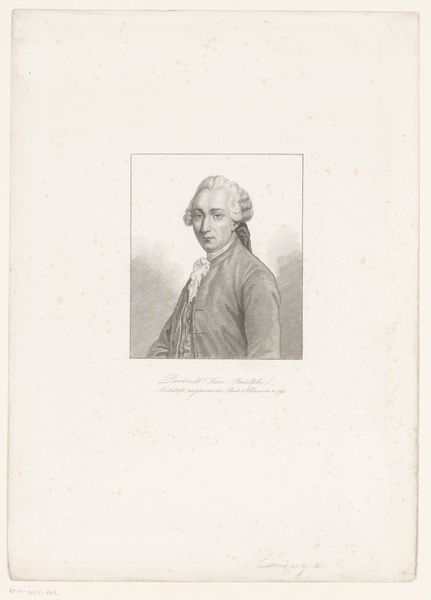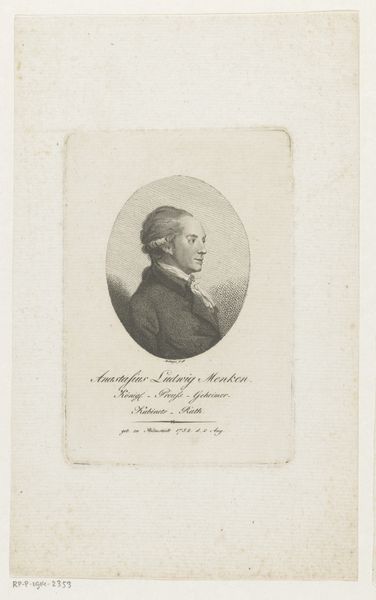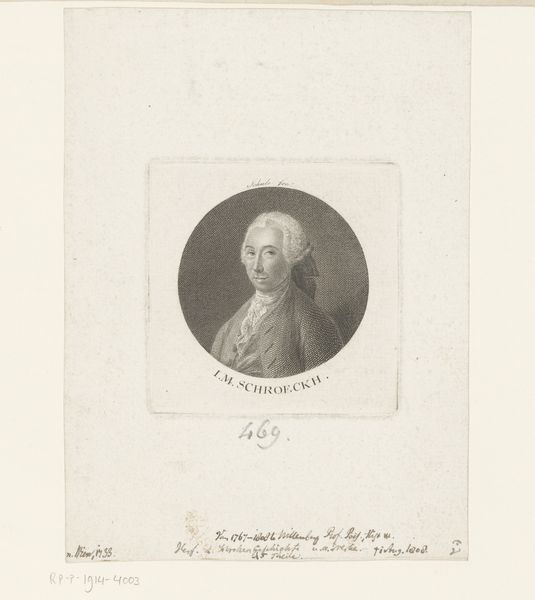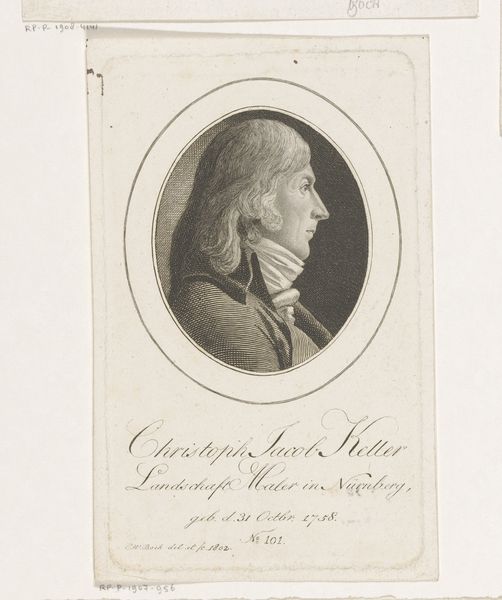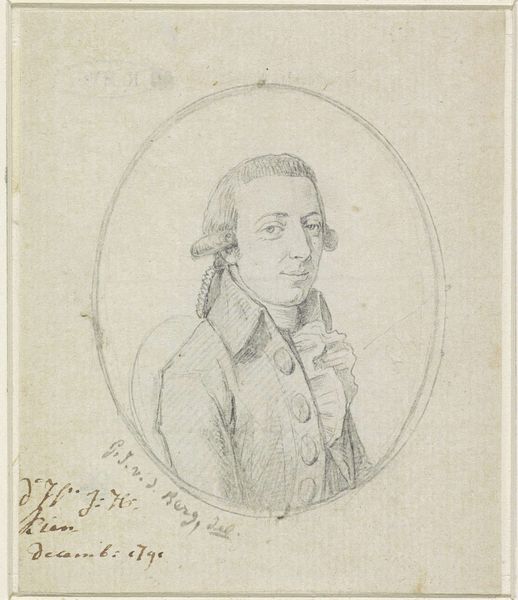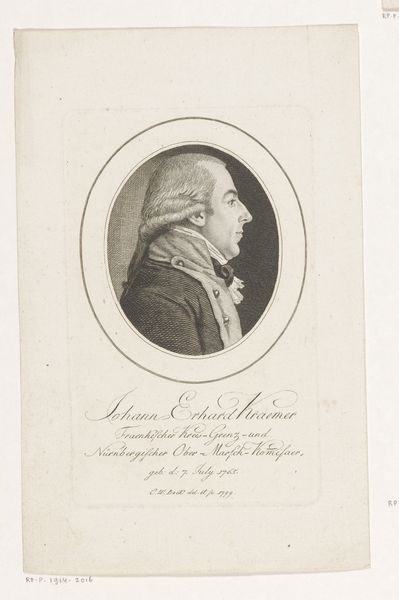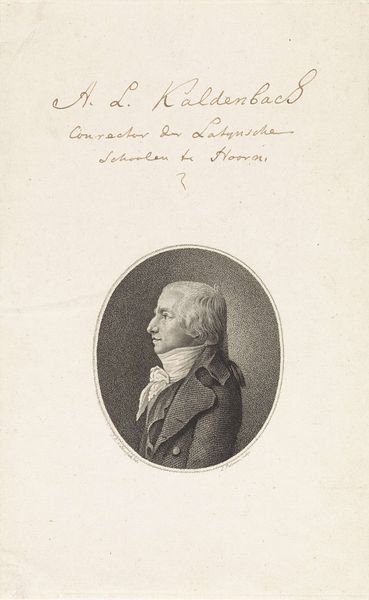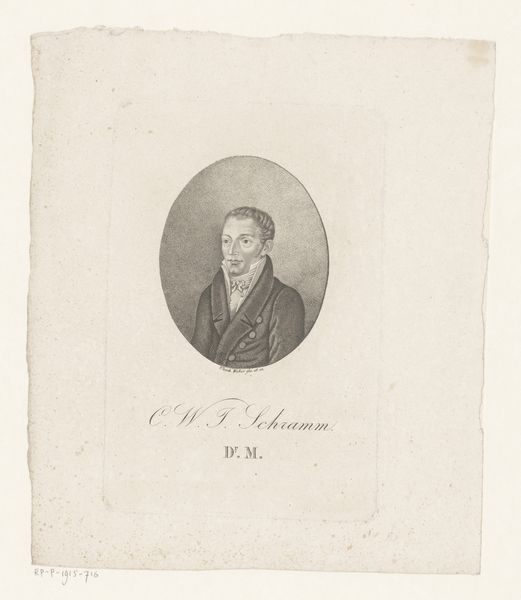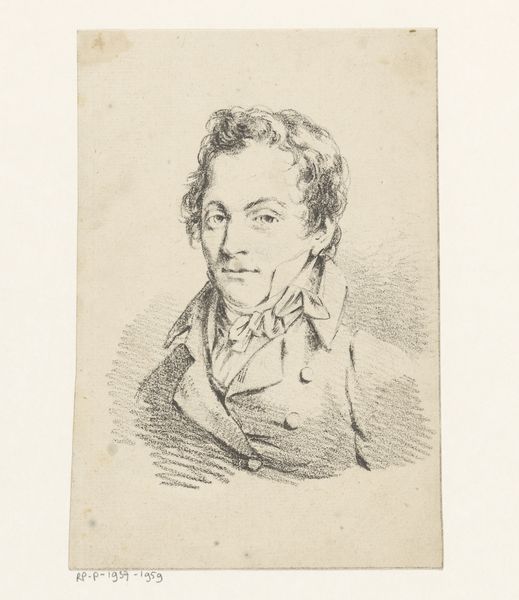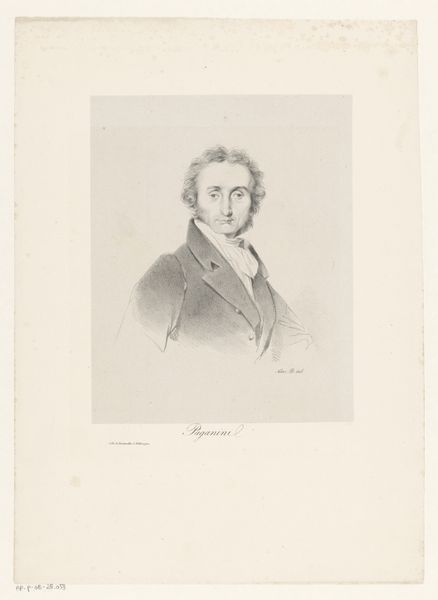
drawing, print, etching, engraving
#
portrait
#
drawing
#
neoclacissism
# print
#
etching
#
engraving
Dimensions: height 193 mm, width 107 mm
Copyright: Rijks Museum: Open Domain
Editor: So here we have Jacques Noël Marie Frémy’s "Portret van Déodat Gratet de Dolomieu," made sometime between 1815 and 1817. It’s a print – an etching and engraving, it looks like. The lines are so delicate; it’s hard to believe it’s not a drawing. What strikes you about this work? Curator: Let’s consider the socio-economic implications of printmaking during the Neoclassical period. Engraving and etching allowed for the mass production of images, thereby democratizing portraiture to a degree. But, who was commissioning these portraits and controlling their distribution? Was this availability merely an illusion? What level of artisanal labor was involved and at what cost? Editor: I see what you mean. So, instead of thinking just about Dolomieu, the subject, we think about all the other labor that went into making this image. Does the Neoclassical style itself suggest anything about this? Curator: Absolutely. The clarity and restraint associated with Neoclassicism, visible here in the precise lines and unadorned background, mirror the Enlightenment's emphasis on reason and order. However, this "rational" aesthetic was enabled by specific, often obscured, modes of production. Were the materials readily available? Did Frémy have a workshop, apprentices? Also, this work challenges modern concepts of copyright, considering the phrase "Fremy del. et sculp." Editor: It’s interesting to consider the process, all those layers of etching and engraving. Thinking about the hands that created it, and the distribution network, changes how I see it. Curator: Exactly. The seemingly simple act of producing this image is in fact a complex interplay of labor, materials, and social forces. Editor: I didn't expect to be thinking about material conditions and labor practices when looking at a Neoclassical portrait today! Curator: Focusing on process provides new understanding and allows us to evaluate how much material making still influences and reflects cultural ideology.
Comments
No comments
Be the first to comment and join the conversation on the ultimate creative platform.
